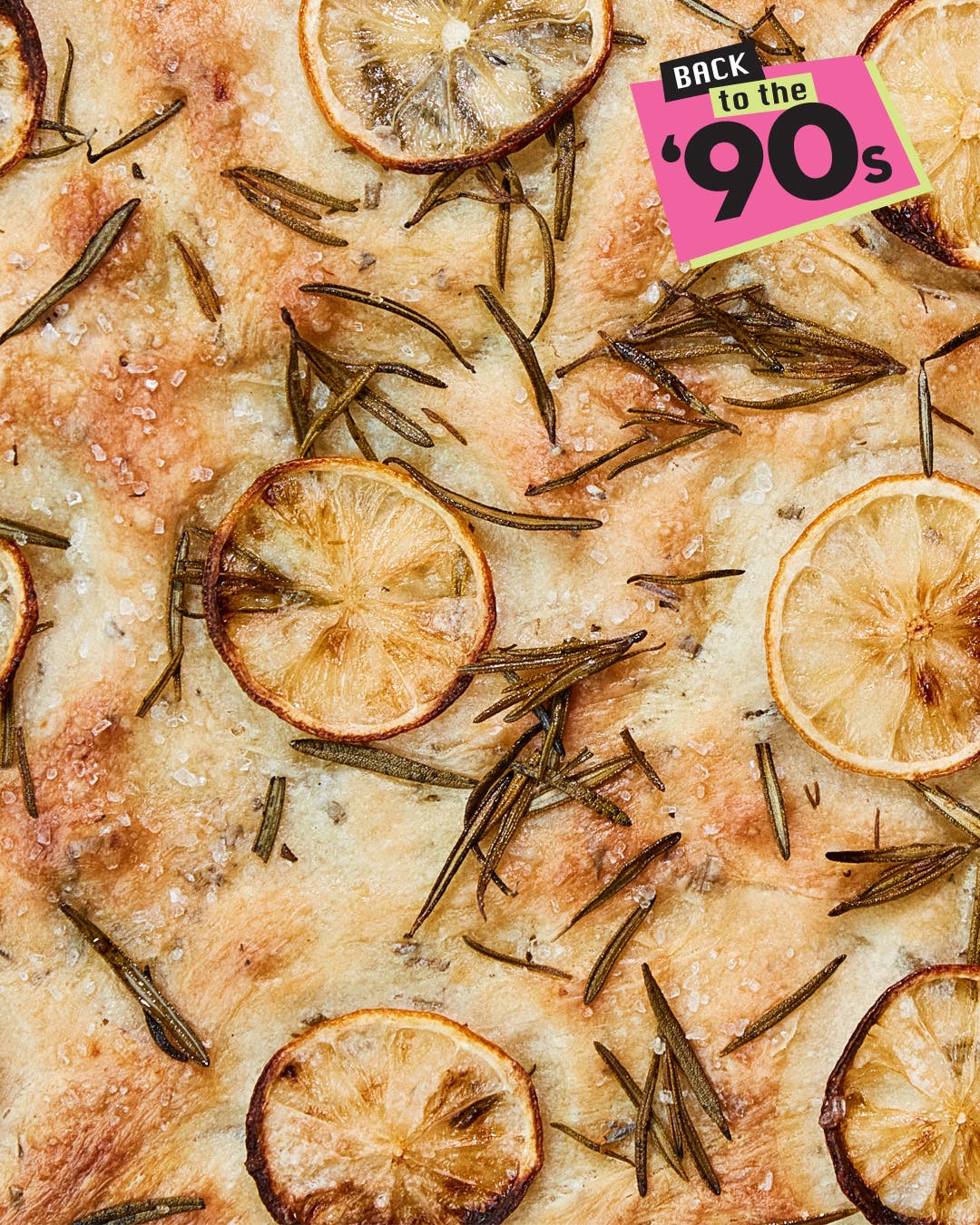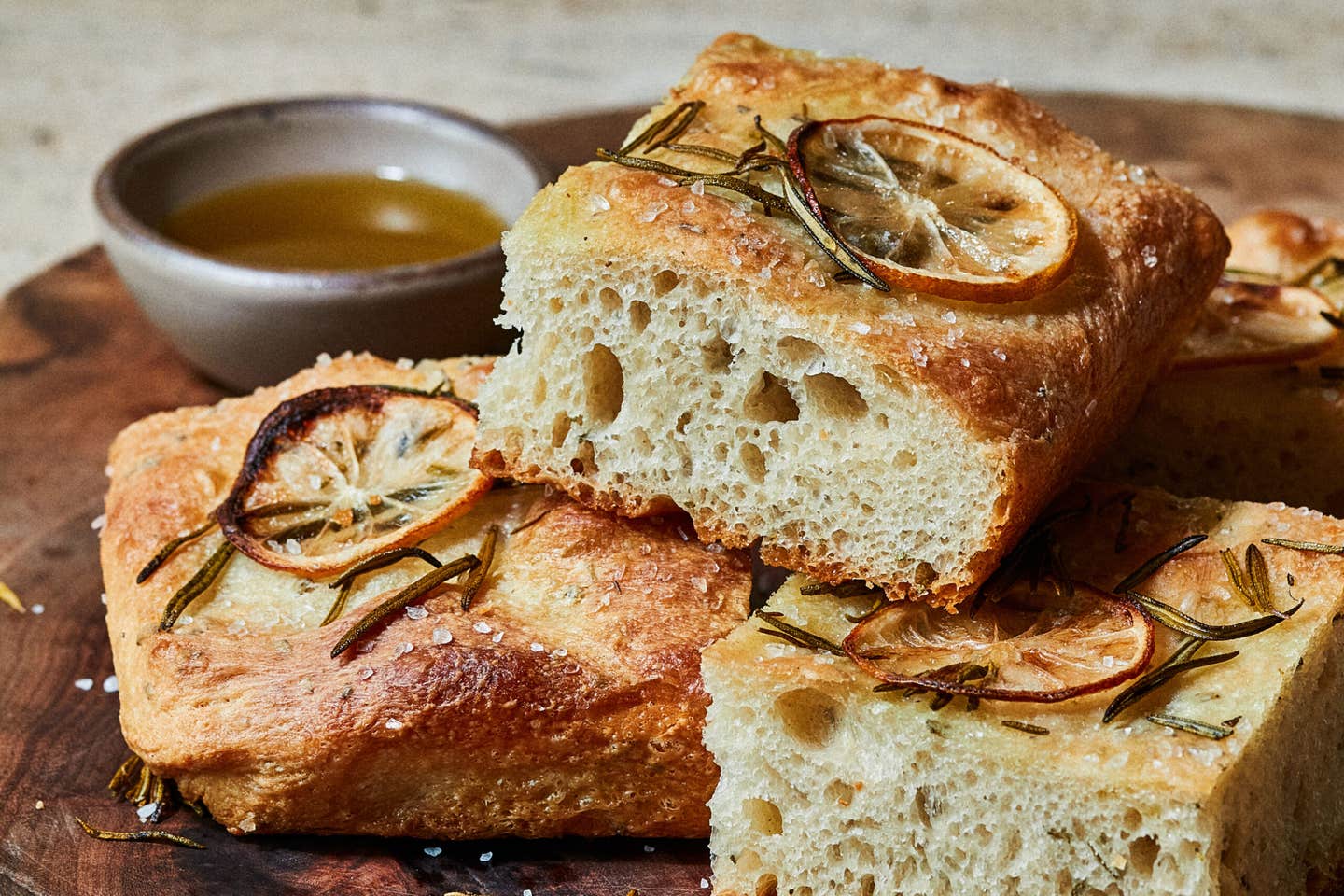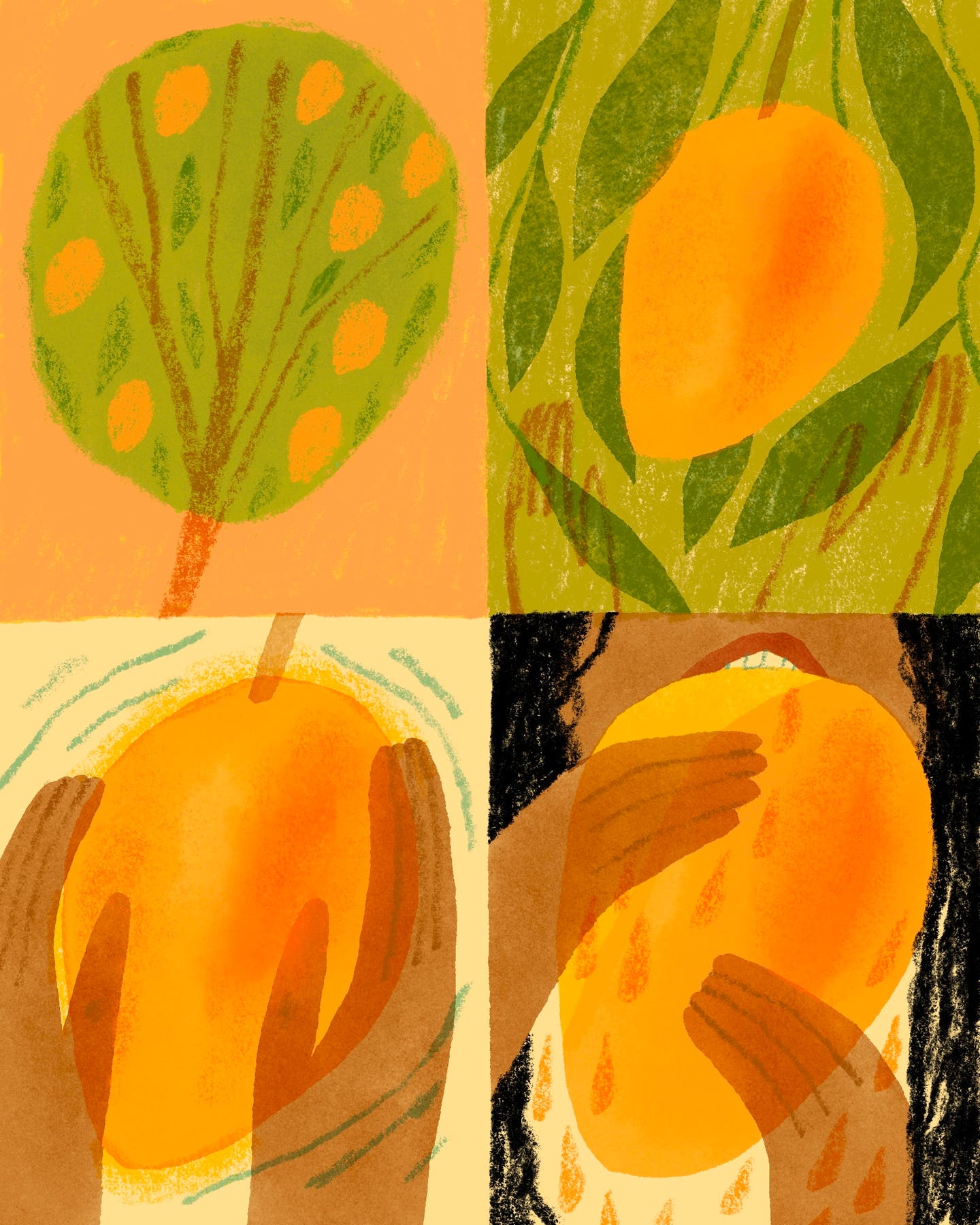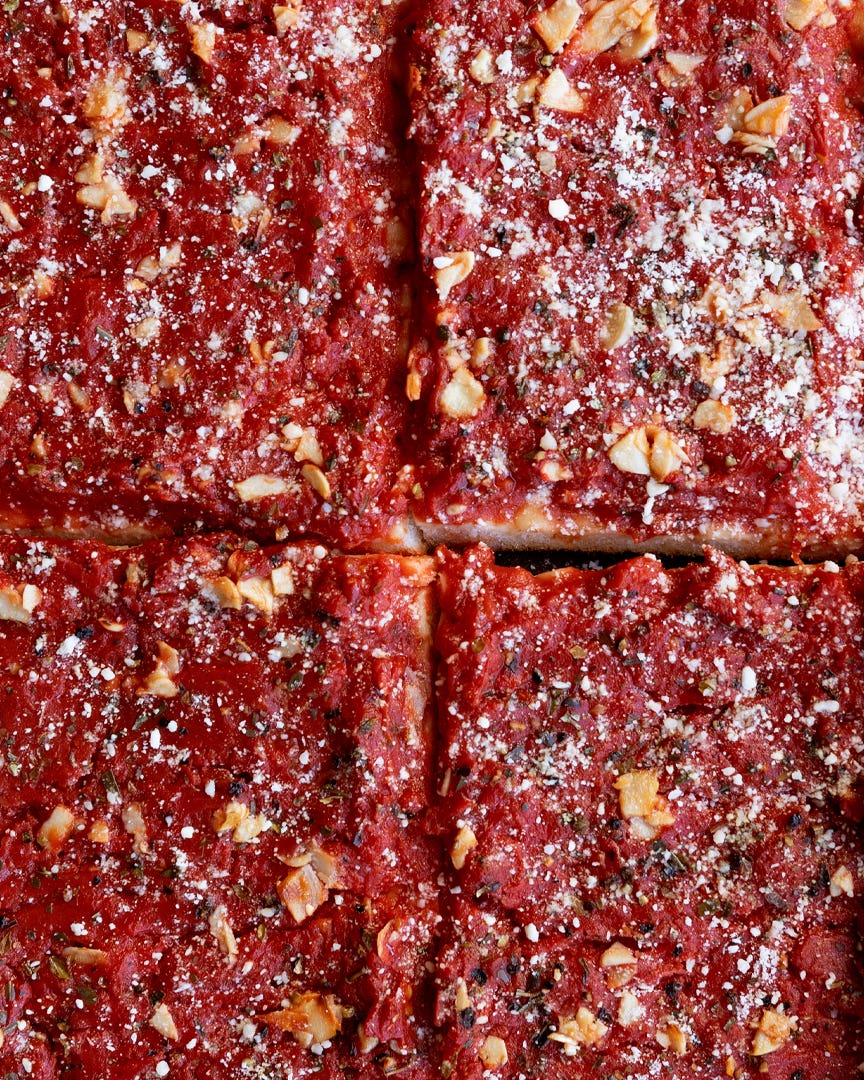How ‘Italian’ Is Rosemary Focaccia, Anyway?
Our Rome correspondent weighs in on the “it” bread of the ’90s, and how it became an essential part of the Italian American restaurant experience.

Welcome to Parla’s Pastas, a column by the Rome-based, New York Times best-selling cookbook author Katie Parla, whose latest title is Food of the Italian Islands. Get ready for a carb-driven journey through the trattorias of Rome, the rural reaches of Campania, the kitchens of Sicily (her ancestral homeland), and beyond. Fire up a pot of water, and andiamo!
As a 20-year Rome transplant with six Italian cookbooks under my belt, I’d love to say I first encountered focaccia at a traditional Genovese bakery, but my initiation actually happened at a (now-closed) Macaroni Grill, the Italian-themed chain restaurant, off Route 1 in New Jersey.
The year was 1993, and in spite of growing up in an Italian American family, I’d never been exposed to Italy’s flatbreads. My Southern Italian ancestors no doubt baked their own version of focaccia, but the tradition didn’t make it to my generation. Sometimes I daydream about those lost recipes—about a mythical focaccia some distant nonna made using (geographically appropriate) durum wheat. It would’ve been drenched in extra-virgin olive oil, almost certainly, and topped with tomatoes with twisty, caramelized edges like the focaccias in bakery windows of Bari today.
And then my thoughts wander back to that Macaroni Grill, where a 13-year-old me was staring down at a tender and spongy focaccia made with soft wheat flour. It came unadorned, simply seasoned with salt and herbs. The crumb was so compact, it practically repelled the olive oil I dragged it through before taking a bite. Based on several Italy-wide trips researching regional doughs, I have an inkling the recipe was inspired by the springy focaccias of Northeastern Italy, specifically Genova and its environs. Frankly, I loved it. And I bet I’d even love it now.
Like pizza, focaccia arrived in the U.S. via Italian immigrants in the late 19th and early 20th centuries and has an unclear origin story. In Italy, the incarnations are many and change from region to region—even village to village. What we do know is that flatbreads have been baked in hearths for several thousand years on the Apennine Peninsula—even if the olive oil-enriched slab we know as focaccia today is far more recent.
Italy’s most famous focaccia hails from Genoa and emerged around the late Middle Ages as a Catholic wedding dish symbolizing blessings and prosperity. It has since lost its religious affiliation, as anyone who’s had a layover in an Italian airport can attest. Sold at bakeries, supermarkets, and even bars, the bread is enjoyed on its own, dipped into cappuccino, or draped with cured meats.
As focaccia evolved in Italy, across the Atlantic, American bakers were making their own versions, riffing on the recipes from the Mother Country with toppings like lemon slices that would’ve been novel in the bread’s homeland. The tinkering continues both Stateside and abroad, as demonstrated by the massively popular recipe featured in Samin Nosrat’s Salt, Fat, Acid, Heat, which draws on Liguria’s famously spongy, springy, oil-rich focacce for inspo, and the Insta-famous focaccia from Bari that appears on the cover of my own cookbook Food of the Italian South.
The 1990s, as many of you will recall, were a simpler time for focaccia. Most of it was spongy and rosemary-perfumed à la Macaroni Grill. The bread was a gateway to a world of Italian flatbreads Americans are still discovering. There’s no end in sight! So, embark on your own focaccia journey—this version, a happy middle ground between Italy and America, tops a Ligurian-style dough with nontraditional lemon slices.
Recipe

Keep Reading
Continue to Next Story










